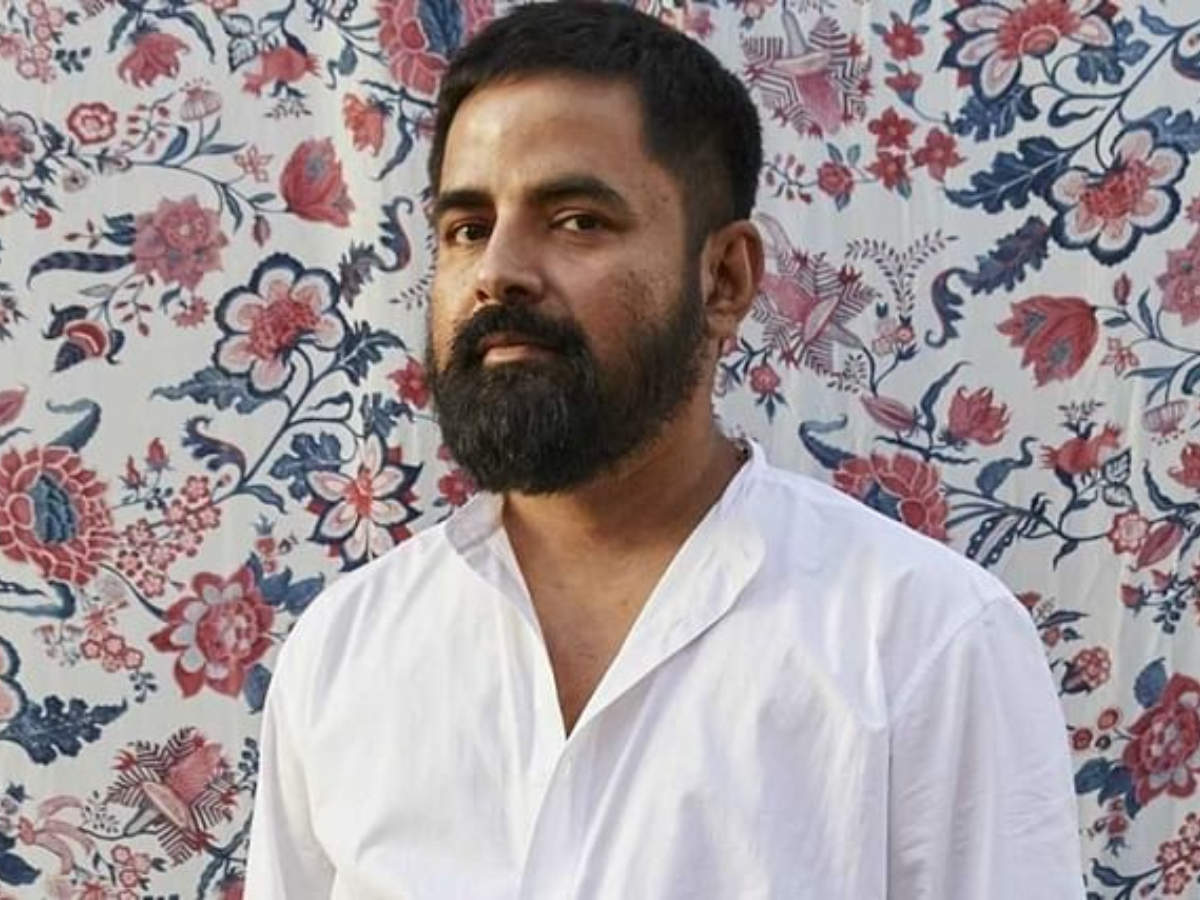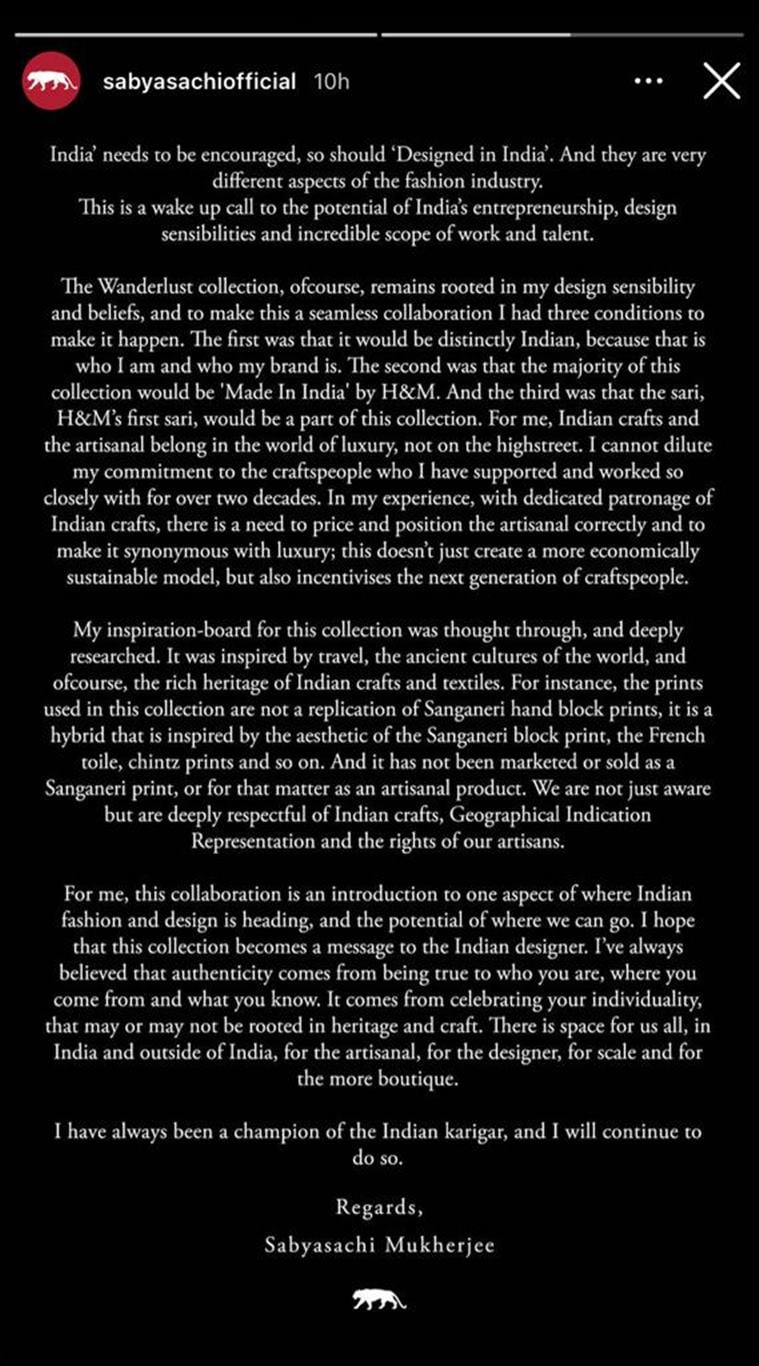
Designer Sabyasachi's collaboration with international fast fashion brand H&M seems to have brought him more despair than satisfaction. After bloggers accused him of associating with a brand that has often been often been charged with greenwashing, the Indian artisan community has raised concerns about the collaboration.
In an open letter to the designer, textile revivalist Laila Tyabji, Jaya Jaitly, founder of artisanal collective Dastkari Haat Samiti, The Crafts Council of India, and Calico Printers Cooperative Society Ltd., Sanganer among others, shared their concerns about the H&M collaboration, and what it means for the artisan community. “… We are… deeply pained by the missed opportunity that ‘Wanderlust’ has been for artisan livelihoods. The publicity material implies that the range is connected with Indian craft. However, the range is not made by Indian artisans and with no visible benefit to them. This was an incredible opportunity to position India’s design and craftsmanship on the global map, to have become the torch-bearers of what regenerative economies can look like. Apart from the many global stores, stalls and shelves boasting ‘Sold Out’ signs, imagine the sheer potential of this story had it only said, ‘Handmade in India’, supporting millions of jobs, equity and sustainable growth in communities that need it the most. Even if half the collection had been made by artisans, it would have made such an impact at a time of economic crisis like this pandemic…,” said the letter.
“It focuses too much on him as a name, as a brand. All of us, the artisans and karigars, think of the community, the art form and the livelihood. What he has done is ‘digitisation’. Even though he is calling it a hybrid design, it’s a hybrid of existing designs. Our karigars are so skilled and innovative, they will create what you want. You don’t have to present a hotch-potch of it. What we teach all the young people, who aspire to work in the craft sector is, ‘to go directly to the craftsperson, understand their skill’. But if you reduce their work to being a ‘hybrid’, and then they have no ownership. You have destroyed their pride and skill,” said Jaitly, terming the designer’s explanation as “disappointing”, added the letter.
The letter also raised valid points on compensating the artisans for their art. "Have the artisan communities that have the propriety rights to these designs been credited or compensated in any way? In the case of some of the designs used in 'Wanderlust,' the Sangneri prints artisans have a geographical indication registration (GI), which means they are legally recognized as the proprietors of this technique and design vocabulary."
The designer took cognizance of the letter and posted his response to the same as an Instagram story. He suggested that his couture collections are all craft-based and artisanal and lie firmly within the luxury sector. “My personal mission as an Indian designer, has been to elevate Indian craft into luxury, and that is a mission that I will carry on working on within luxury space,” he wrote. He also added that his collaboration collection with H&M was an entirely different mission where his sole aim was to put Indian designs on global map.

He called it a “big win” for him and his label, and added that he is no way going to dilute his commitment to the artisans since Indian crafts belong in the world of luxury and should not be sold as high-street goods.

The signatories of the open letter responded to Mukherjee’s story with another story. “Indian aesthetics and craft traditions have been in global memory for more than 5,000 years — long before H&M! Many designers do turn to Indian artisan techniques for their luxury lines — an approach followed by the West towards the handcrafted. In India and our traditions, craft has always been inclusive, culturally significant, and linked to millions of livelihoods. And the exquisite and the high street have always comfortably co-existed with each other. Craft Haats & Bazaars stand out as a symbol of that coexistence alongside designer boutiques, export firms and Government emporia….” wrote Meera Goradia, network anchor, Creative Dignity, a collaboration of organisations, which came together to help artisans survive the pandemic.
Goradia accused Sabyasachi of digitisation and not using the artisans' real craft. She added that the issue had to be addressed to many global brands, who often tweak and modify the ‘Indian motifs and crafts. This is the core of the discussion, and this goes beyond Sabyasachi.”







